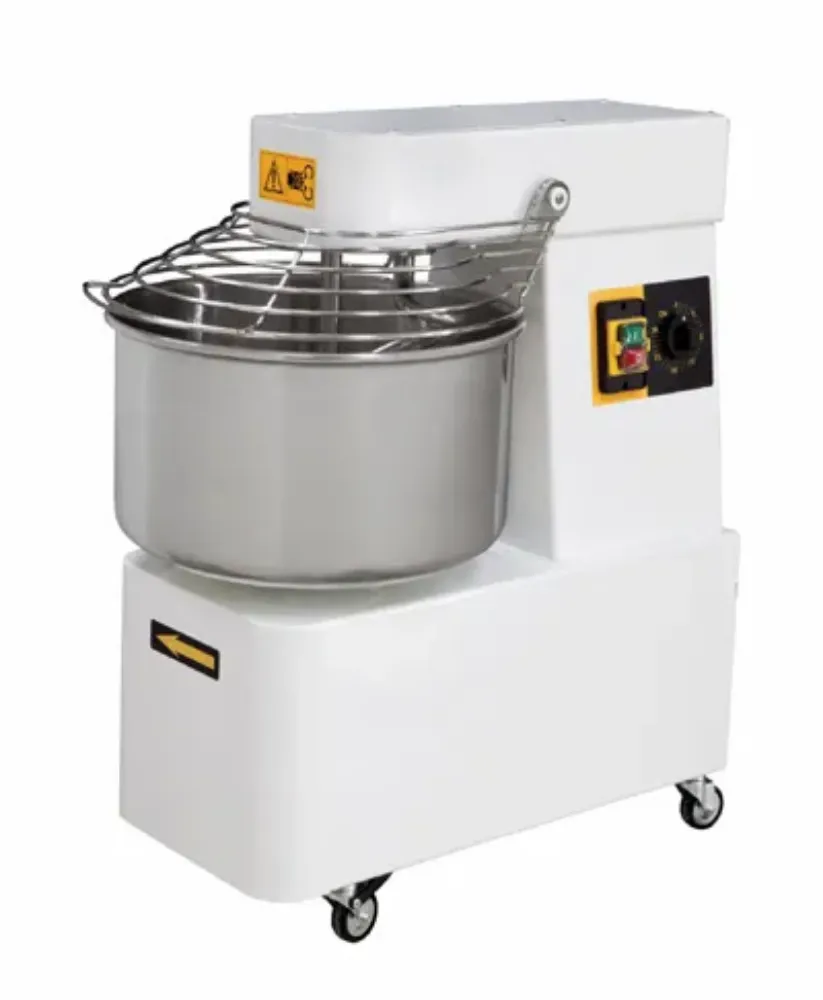
Planetary Mixer
The Planetary Mixer: This type of mixer features a fixed, non-rotating bowl. The bowl is latched onto the base of the machine and can be raised into the mixing position, and inversely lowered to remove the bowl. A great advantage of this mixer type is the availability of different attachments that can be used when mixing. Standard attachments include a paddle, whip, dough hook, with other add-ons also available. Planetary mixers come in both table top and full floor models, to best suit your production needs. Machine size is determined by the capacity of mixing bowl volume, usually measured in litres. Table top planetary mixers models come in 7 litre (TM7) and 10 litres (PM10) varieties while, floor planetary mixers models come in 20 litre Planetary mixer (PM20) and 30 litre Mixer (PM30) capacities. Many of these machines also come with variable speed options to accommodate different mixing needs. In almost every pastry shop or bakery and school you will find at least one planetary mixer. The reason these mixers are so popular is that they offer greater versatility. Often, bakers and pastry chefs and cooks will use the paddle attachment for blending or creaming products. This includes pie crust dough, scones, cookie dough or cake filling. The whip attachment is commonly used to aerate mixtures such as, meringue, sponge cake, whipped cream, and mousse. Lastly, the dough hook attachment is typically used in pizza shops and small bread bakeries.
Spiral Mixer
The Spiral Mixer: The main function of the spiral mixer is to gently mix bread or pizza dough allowing it to develop the proper gluten structure, while not overworking the dough. This is achieved while the bowl of the mixer rotates as the spiral hook is spinning and kneading the dough. The benefit to this action is that the spiral hook is kneading only a portion of the whole dough mass at a given time. This keeps friction heat low, providing a more homogeneous mix. Similar to their planetary counterparts, spiral mixers can also come with variable speeds, which facilitate dough development. When mixing dough in a spiral, low speed helps bring the mix together into a homogenous mass; whereas high speed is meant to develop the gluten structure of the dough. The volume of the bowl indicates the size of spiral mixers. 2 models are available a 20 litre Spiral Mixer (SM20) and 30 litre (SM30) machine. Available features for spiral mixers include a removable bowl and a trolley. This enables easy transportation of large dough batches and allows for bakeries to keep multiple mixing bowls ready for production.
Uses: Typically, this type of mixer does not have interchangeable attachments. Most commonly used for mixing bread dough, spiral mixers are capable of handling a variety of different dough types. This includes very stiff dough with low hydration levels; and high hydration dough types such as ciabatta. Some bakeries also expand their machine's production purpose beyond the scope of bread. Some examples include blending together pie dough, and mixing scones and biscuits.
